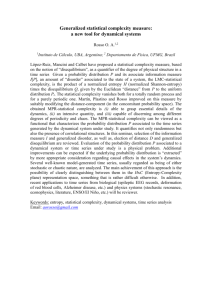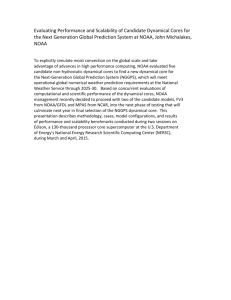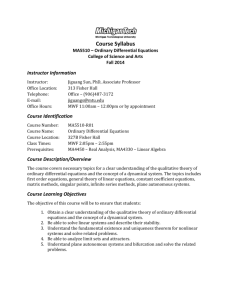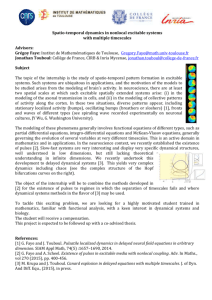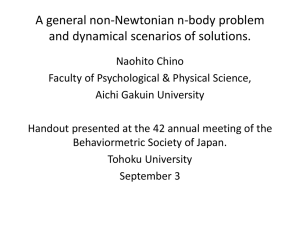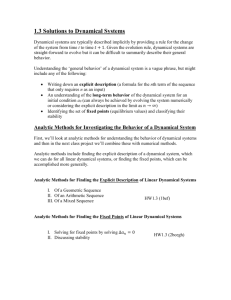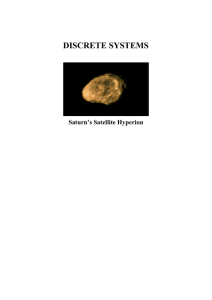MTH3104
advertisement
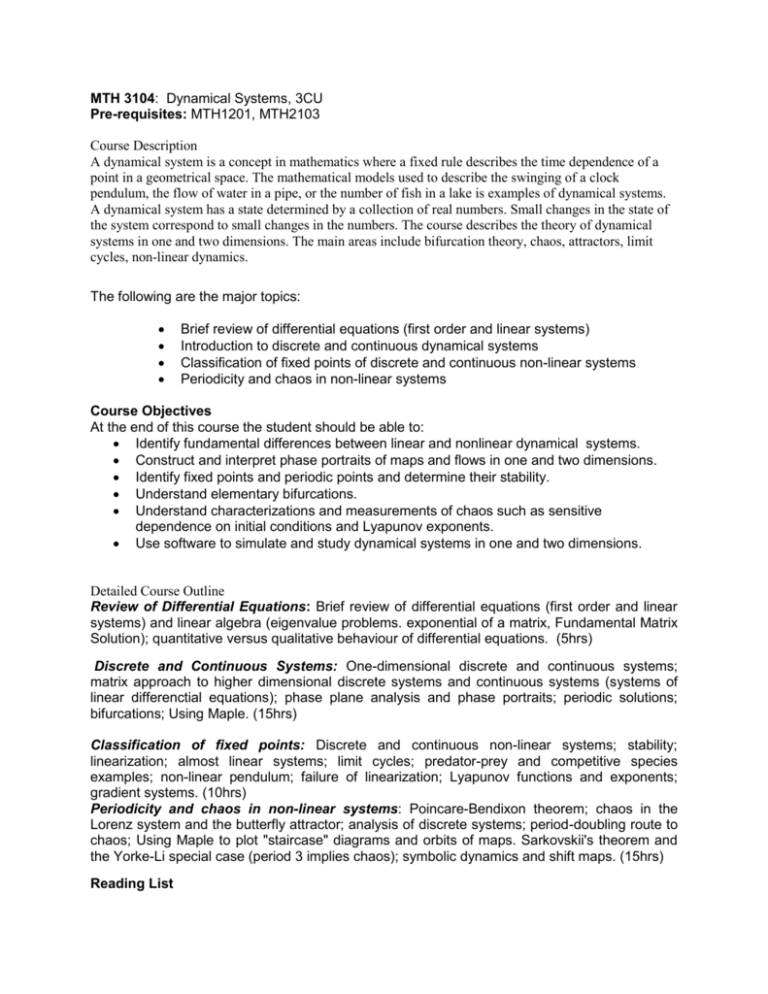
MTH 3104: Dynamical Systems, 3CU Pre-requisites: MTH1201, MTH2103 Course Description A dynamical system is a concept in mathematics where a fixed rule describes the time dependence of a point in a geometrical space. The mathematical models used to describe the swinging of a clock pendulum, the flow of water in a pipe, or the number of fish in a lake is examples of dynamical systems. A dynamical system has a state determined by a collection of real numbers. Small changes in the state of the system correspond to small changes in the numbers. The course describes the theory of dynamical systems in one and two dimensions. The main areas include bifurcation theory, chaos, attractors, limit cycles, non-linear dynamics. The following are the major topics: Brief review of differential equations (first order and linear systems) Introduction to discrete and continuous dynamical systems Classification of fixed points of discrete and continuous non-linear systems Periodicity and chaos in non-linear systems Course Objectives At the end of this course the student should be able to: Identify fundamental differences between linear and nonlinear dynamical systems. Construct and interpret phase portraits of maps and flows in one and two dimensions. Identify fixed points and periodic points and determine their stability. Understand elementary bifurcations. Understand characterizations and measurements of chaos such as sensitive dependence on initial conditions and Lyapunov exponents. Use software to simulate and study dynamical systems in one and two dimensions. Detailed Course Outline Review of Differential Equations: Brief review of differential equations (first order and linear systems) and linear algebra (eigenvalue problems. exponential of a matrix, Fundamental Matrix Solution); quantitative versus qualitative behaviour of differential equations. (5hrs) Discrete and Continuous Systems: One-dimensional discrete and continuous systems; matrix approach to higher dimensional discrete systems and continuous systems (systems of linear differenctial equations); phase plane analysis and phase portraits; periodic solutions; bifurcations; Using Maple. (15hrs) Classification of fixed points: Discrete and continuous non-linear systems; stability; linearization; almost linear systems; limit cycles; predator-prey and competitive species examples; non-linear pendulum; failure of linearization; Lyapunov functions and exponents; gradient systems. (10hrs) Periodicity and chaos in non-linear systems: Poincare-Bendixon theorem; chaos in the Lorenz system and the butterfly attractor; analysis of discrete systems; period-doubling route to chaos; Using Maple to plot "staircase" diagrams and orbits of maps. Sarkovskii's theorem and the Yorke-Li special case (period 3 implies chaos); symbolic dynamics and shift maps. (15hrs) Reading List The reading list includes but is not limited to the following texts. Differential Equations and Dynamical Systems (Second Edition) by Lawrence Perko, published by Springer (1996); Nonlinear Dynamics and Chaos with Applications to Physics, Biology, Chemistry and Engineering by Steven H. Strogatz, published by Addison Wesley (1994). Dynamical Systems by D.K. Arrowsmith and C.M. Place (Chapman and Hall 1992). It has a good chapter on higher dimensional systems, plus a chapter on examples and bifurcations. Order within chaos by Pierre Berge, Yves Pomeau and Christian Vidal (John Wiley 1984) An introduction to Chaotic Dynamical Systems by Robert Devaney ((Addison-Wesley 1989). Dynamics and Bifurcations by J. Hale and H. Kocak (Springer 1991) Differential Equations, Dynamical Systems and Linear Algebra by Morris W.Hirsch and Stephen Smale, (Academic Press 1975). A great classic. In principle an entry level book both for Ordinary Differential Equations and Linear Algebra, it goes fast and deep and covers much of the material we will be covering. A First Course in Discrete Dynamical Systems (Second Edition) by Richard A. Holmgren (Springer 1996). Differential Equations: A Dynamical Systems Approach, Parts I and II by J.H. Hubbard and B.H. West (Springer 1995). Part I is an entry level text; Part II covers much of what we will be covering. Nonlinear Dynamics and Chaos by J.M.T. Thompson and H.B. Stewart (John Wiley 1986). Very similar to Strogatz, but at a more advanced level. Learning Outcome o Identify fundamental differences between linear and nonlinear dynamical systems. o Construct and interpret phase portraits of maps and flows in one and two dimensions. o Identify fixed points and periodic points and determine their stability. o Understand elementary bifurcations. o Understand characterizations and measurements of chaos such as sensitive dependence on initial conditions and Lyapunov exponents. o Use software to simulate and study dynamical systems in one and two dimensions.
![科目名 Course Title Biophysics(生物物理工学E) [Biophysics] 講義](http://s3.studylib.net/store/data/006875691_1-037c7ffb9d75e651250ec104bd31557f-300x300.png)
